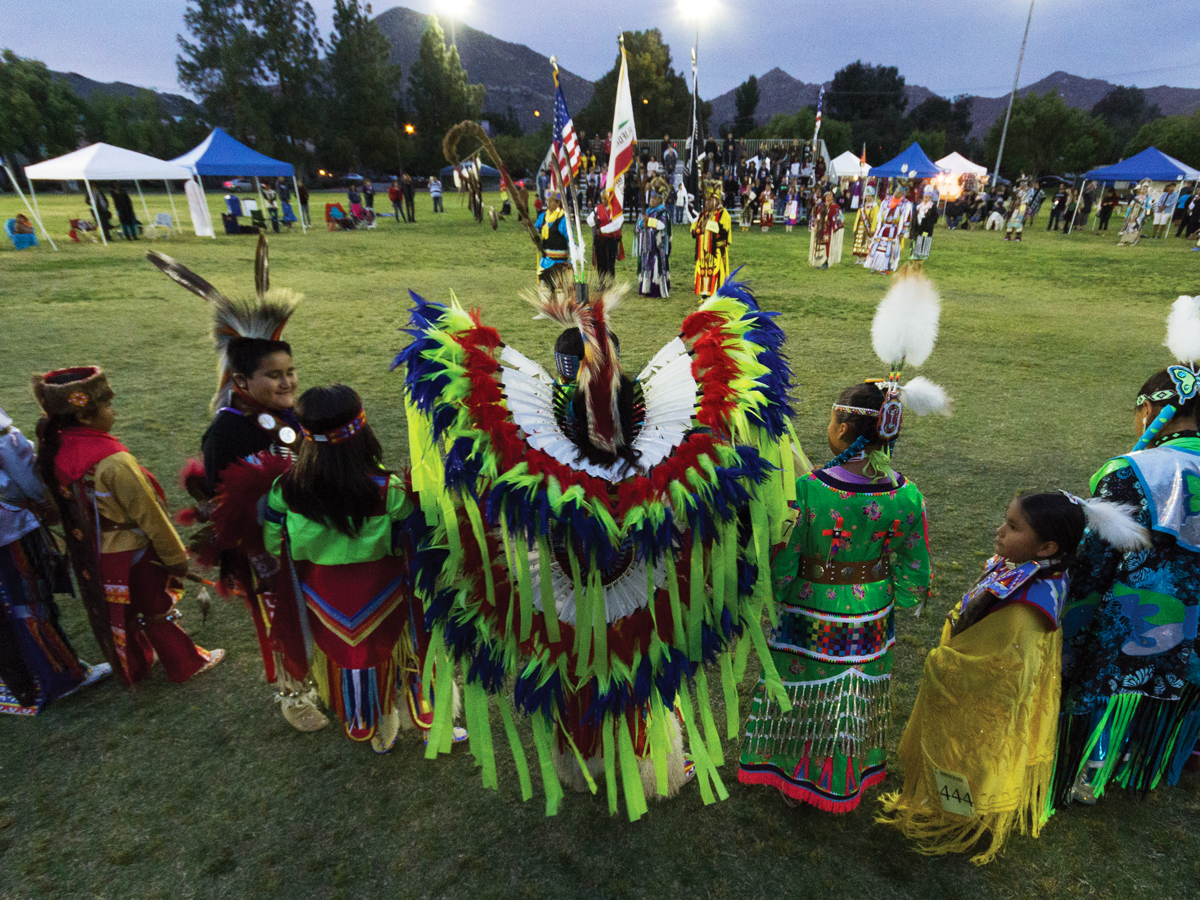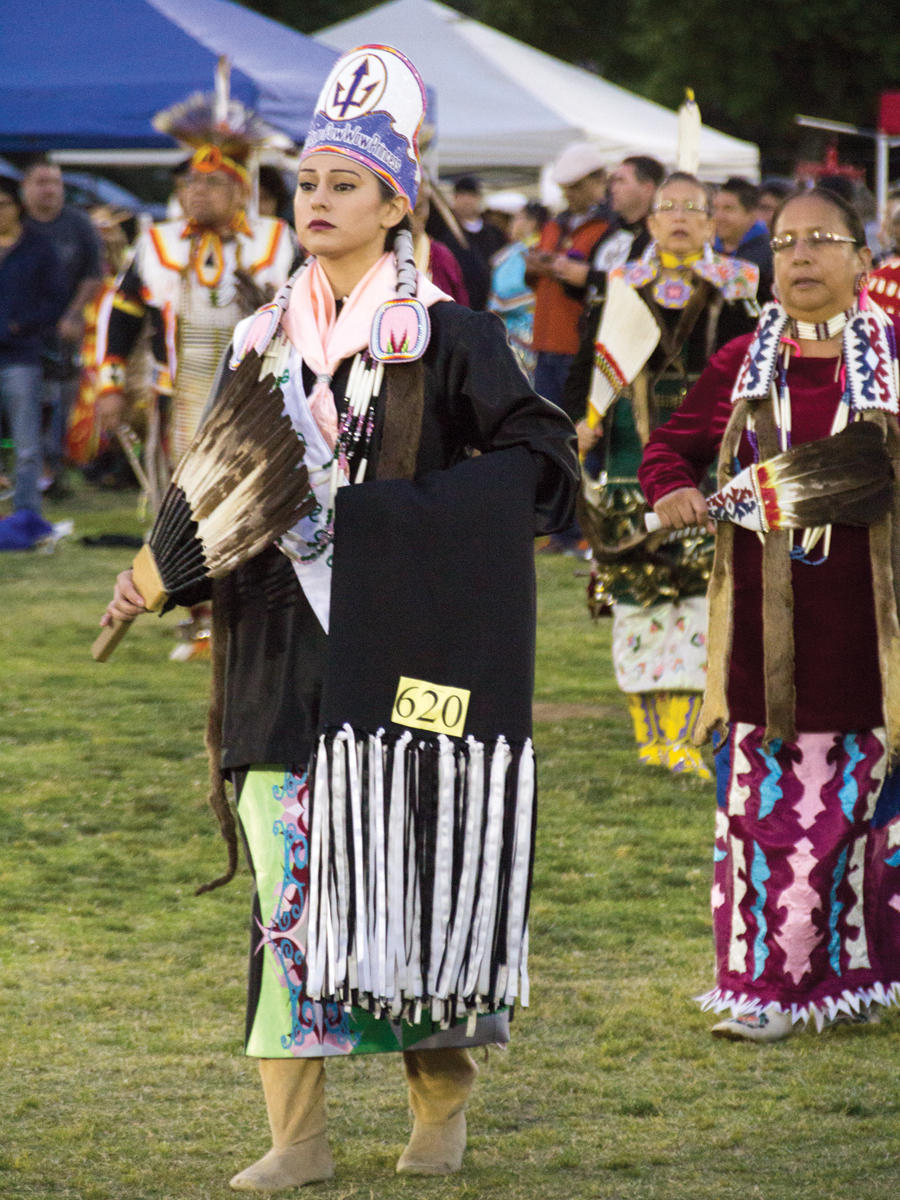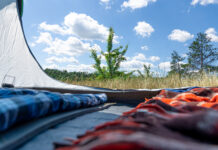
Individuals made their way to the open field at the Riverside Sports Complex on Friday evening to attend UCR’s 34th annual Pow Wow. Multiple tents and small booths which featured items such as jewelry, dream catchers and clothing were set up under the cloudy, gray skies that hovered over the event. Small children dove in and out of the tents, the beads from their traditional Native American wear swinging to and fro while their family members watched from lawn chairs. Vendors conversed with one another while attendees made their way to food tents selling fry bread, tacos and funnel cakes. I skimmed the beautiful assortment of accessories decorating the booths as I made my way over to the bleachers and waited for the night of performances to begin.
A group of men blew tobacco clouds in different directions to bless the area as a ceremonial practice. The audience was then introduced to bird singing, a musical style that originated in Native American tribes. The men shook rattles as they began singing and the audience watched as four women bounced and swayed in front of them to the tunes. In between songs, the crowd received a brief history lesson on Native American practices and the stories behind a few of the songs. “These songs were passed down from our elders, some talking about the migration of the Kawia people,” explained a bird singer.
The songs continued as the cast of dancers continued to change and the sky darkened overhead. Arriving a little behind schedule, emcee Bobby Whitebird thanked the bird singers for their performance before starting off the next segment of the program with a prayer. The crowd then got to witness gourd dancing, a Native American celebration dance. Donned in colorful, traditional Native American attire, the dancers slowly inched their way from the tents to the center of the circle in front of the audience. A few women also remained near the tents and swayed to the singing and beats created by southern drum players Hale & Co. I noticed several audience members bobbing their heads as Whitebird explained the importance of the drum to the Native American people.
Halfway through the performance, a blanket was placed in the middle of the circle and audience members were encouraged to place money on it as a way of giving back to those who performed. Several people from the crowd rushed toward the blanket as Whitebird thanked everyone for their willingness to donate. The gourd dance concluded and we were then treated to the grand entry which showcased all of the participants in a perfect finale to an intriguing program. A flag and victory song was performed as several people danced and followed behind David Redbird, the carrier of the eagle staff. Following Redbird was marine veteran Alfred Martinez carrying the U.S. flag, Dean Webster from the marine corps carrying the California flag and Jean Webster, also from the marine corps, carrying the POW/MIA (Prisoner of War, Missing in Action) flag.
As more dancers continued to circle the area, Whitebird introduced head man dancer Casey Fox and head woman dancer Sarita McGowan. He also thanked arena director Victor Chavez and several people who helped to make the Pow Wow possible. It was then time for the intertribal dance in which each of the tribes got a chance to dance around the arena. A group of children known as the “tiny tots” also got a chance to dance around the circle and collect a trail of money that a few adults left for them, inducing an “aw” reaction from the crowd.
Things began to slow down as the performances came to a close. Several attendees left the bleachers to check out the booths and grab some food before heading out, while others stayed behind to continue watching those who were still dancing. Lucky for us, it didn’t start pouring at any point during the event and attendees got to leave a great show happy and dry.









